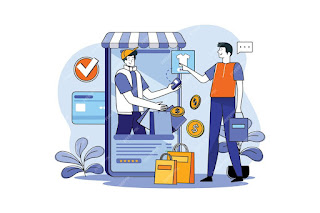P2P (Peer-to-Peer) Marketplace: A Full Development Guide 2024
Peer-to-peer (P2P) marketplaces are still a major player in the ever-changing e-commerce scene. By removing the need for middlemen, these platforms enable people to do business directly with one another and promote a feeling of community-driven commerce. This thorough development roadmap for 2024 will give you the knowledge and tactics you need to start this fascinating adventure, whether you're thinking about getting into P2P marketplaces or you just want to keep ahead of the trend.
Understanding P2P Marketplaces
Peer-to-peer markets are online venues where people can deal with each other directly by buying, selling, or exchanging goods, services, or information. P2P marketplaces enable users to transact peer-to-peer, fostering a more decentralized and cooperative ecology than traditional e-commerce models, which depend on authoritative shops or service providers.
Types of P2P Marketplaces
Product Marketplaces: These platforms enable users to buy and sell physical goods directly to one another. Examples include platforms like eBay and Etsy, where users can list handmade crafts, vintage items, or second-hand goods.
Service Marketplaces: Service-based P2P marketplaces connect individuals seeking services with those offering them. Platforms like TaskRabbit and Upwork allow users to find freelancers for tasks ranging from household chores to professional services like graphic design or programming.
Sharing Economy Platforms: These marketplaces facilitate the sharing of assets or resources between individuals. Examples include Airbnb for accommodation sharing and Uber for ride-sharing.
Knowledge Exchange Platforms: P2P marketplaces like Udemy and Coursera enable users to exchange knowledge and skills by offering and enrolling in online courses.
Key Components of Developing a P2P Marketplace
Market Research: Conduct thorough market research to identify a niche or untapped market where there is demand for peer-to-peer transactions. Understand your target audience's needs, preferences, and pain points to tailor your platform accordingly.
Platform Design: Design an intuitive and user-friendly interface that facilitates seamless navigation, listing of items/services, and transaction completion. Prioritize mobile responsiveness and accessibility to cater to a diverse user base.
Trust and Safety Measures: Implement robust trust and safety measures to foster trust among users and mitigate risks associated with peer-to-peer transactions. Incorporate features such as user verification, ratings and reviews, and secure payment processing.
Community Building: Cultivate a strong sense of community within your marketplace by fostering communication, collaboration, and engagement among users. Encourage user-generated content, feedback, and participation to enhance the overall user experience.
Scalability and Flexibility: Build a scalable and flexible platform that can accommodate growth and adapt to changing market dynamics. Invest in robust infrastructure, technology stack, and development frameworks to future-proof your marketplace.
Marketing and Promotion: Develop a comprehensive marketing strategy to attract users, drive traffic to your platform, and promote user engagement. Utilize a mix of digital marketing channels, social media platforms, and targeted advertising campaigns to reach your target audience effectively.
Cost Considerations
The cost of developing a P2P marketplace can vary depending on factors such as scope, complexity, features, and technology stack. Budget for expenses related to:
Development: Including design, coding, testing, and customization.
Infrastructure: Hosting, server maintenance, and scalability.
Security: Implementing security measures and compliance with regulations.
Marketing: Promotional activities, advertising campaigns, and user acquisition.
Maintenance: Ongoing updates, bug fixes, and customer support.
Conclusion
Peer-to-peer marketplaces offer a strong chance for innovation and expansion as the e-commerce scene develops further. You may put yourself in a successful position in this vibrant and dynamic ecosystem by following industry trends and best practices and comprehending the essential elements of creating a P2P marketplace. This in-depth development guide for 2024 will provide you with the skills and tactics you need, regardless of your level of experience as an entrepreneur or as a business founder, to realize your dream of a peer-to-peer marketplace.

Comments
Post a Comment